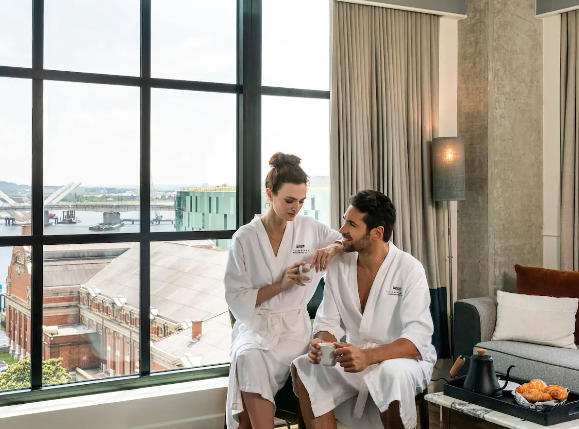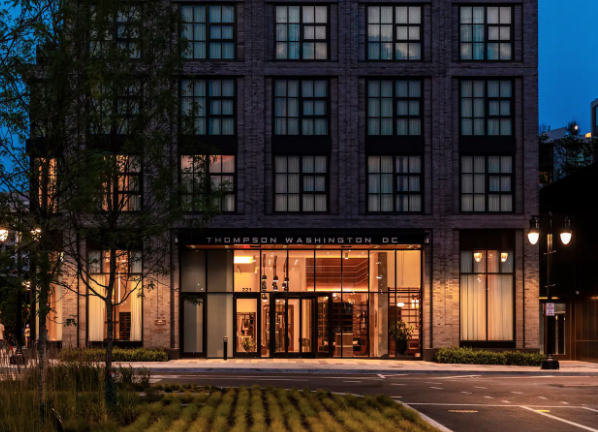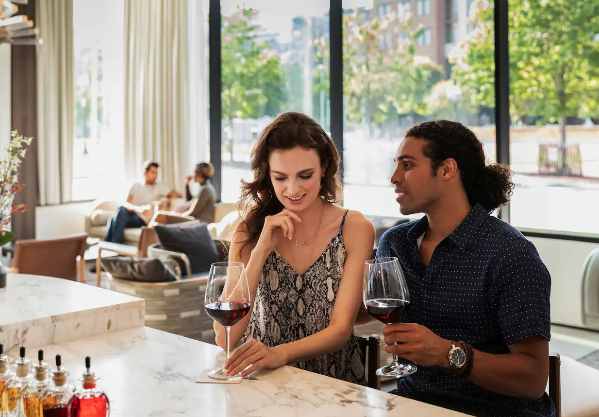Thompson Washington D.C. brings Style, Sophistication and Gorgeous River Views
A collection of weathered wood, glass, and dark grey brick rising from the historic Washington Navy Yard, Thompson Washington D.C. stands at the intersection of nautical history and industrial sophistication.

Bike along the Anacostia River Trail, explore a nearby Smithsonian Museum or two, and stroll along the National Mall. Then, cap off the evening at their signature on-site restaurant.
![]()

Rooms + Suites at The Thompson Washington D.C.
Thompson Washington DC Suite
Sweeping views through floor-to-ceiling windows frame this expansive midcentury modern suite. Revel in the energy of the Navy Yard from your private balcony while inside, enjoy the king bed outfitted in crisp white linens, the separate living room and the dining table with seating for four.

Thompson Suite Ballpark View
Step inside this 805-square-foot suite and take in sweeping views of D.C.’s professional baseball team’s national ballpark through the floor-to-ceiling windows; the suite offers one king bed, a separate living room, a balcony, and guest bathroom.
1 King Balcony
Enjoy the breeze from the walkout balcony of this spacious retreat. Take in the energy of the Capitol Riverfront neighborhood, then head inside, where a king bed, separate work area, hardwood floors, and large industrial windows make this a stylish escape.

Culinary Experiences at The Thompson Washington D.C.
The Thompson Bar Room
Open daily for lite bites and libations.
Rooftop at The Thompson
Featuring floor to ceiling windows and outdoor seasonal space, join us at Rooftop at the Thompson for 360-degree cool views and sunset hues.
Nestled alongside the Anacostia River, the all-season social anchor of the Navy Yard is the go-to bar for year-round waterfront vibes, after-work bevvies, private events and gatherings.
Surveyor at The Thompson
Newly opened!
Surveyor is a true-American-inspired supper house, drawing inspiration from traditional American dishes and classic spirit-forward cocktails.



